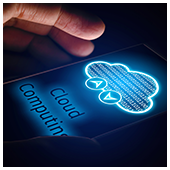With Bring Your Own Device (BYOD) policy and a growing mobile workforce, business owners are looking for an agentless way to manage iOS devices, one that would be convenient and secure for both admins and employees. Thanks to G Suite’s latest feature, Basic Mobile Management, everyone can now work in peace. But that’s not all […]
 With Bring Your Own Device (BYOD) policy and a growing mobile workforce, business owners are looking for an agentless way to manage iOS devices, one that would be convenient and secure for both admins and employees. Thanks to G Suite’s latest feature, Basic Mobile Management, everyone can now work in peace. But that’s not all Google has in stored for its users, as four more updates have been introduced as well. So what are the latest features that G Suite has to offer?
With Bring Your Own Device (BYOD) policy and a growing mobile workforce, business owners are looking for an agentless way to manage iOS devices, one that would be convenient and secure for both admins and employees. Thanks to G Suite’s latest feature, Basic Mobile Management, everyone can now work in peace. But that’s not all Google has in stored for its users, as four more updates have been introduced as well. So what are the latest features that G Suite has to offer?
Basic Mobile Management
G Suite’s Basic Mobile Management offers an agentless way to manage iOS devices by allowing admins to mandate basic security on those devices without requiring users to install mobile device management profiles. Admins no longer need to set up an Apple Push Certificate and renew it regularly.What’s more, admins can now enforce a screen lock, wipe corporate accounts, and view, search and manage their device inventory easily. Should your organization require additional restrictions, mobile audit or application management on iOS devices, you can ensure those settings are adequately achieved using the Advanced Mobile Management option.
Explore
Available in Google Docs, Sheets and Slides, Explore gives you insights, design tools and research recommendations that allow you to easily cite findings by inserting citations as footnotes with the click of a button. You can choose between MLA, APA, and Chicago style formats, too.Iterative calculation
Iterative calculation is the latest feature in Google Sheets (File >Spreadsheet settings > Calculation > Iterative calculation). This feature allows you to set the maximum number of times a calculation with a circular reference can take place. You can specify a convergence threshold which will stop the calculations when results from successive calculations differ by less than that threshold value, even if the maximum number of calculations has yet to be reached. It sure sounds like a mouthful, but for anyone working with spreadsheets, this is a much needed development.Sheets Android UI
Ever feel annoyed by the language and menu search of Google Sheets in your Android device? Endure no more, as the app UI has been updated with right-to-left language settings to read and navigate. Searching the menus in Sheets on the web like in Docs and Slides can now be done, too.Gmail messages
Bounced messages and message headers are now easier to read and understand. When your mail has problems being delivered, the bounce message now features a more user-friendly text as well as translations into your language (if the language has been set on the account). The original message will still be available below the bounce message.Message headers, on the other hand, will be shown in a table with an easy-to-read format. Message Id, SPF and DKIM status will be right in plain view. Links to download the actual original message and the ability to copy to clipboard are now available, too. The original message header can be found below the table.
Stay tuned for more updates from Google and other cloud solutions that will help enhance productivity for your small business. If you have any questions about G Suite or would like to know about other cloud solutions that can help transform the way you work, just give us a call today.

 Despite today’s paperless business environment, every now and then there comes a time when you just have to use a printer. And since many businesses have embraced cloud computing, why not combine the cloud with regular printers? Will these devices enjoy the same benefits that cloud computing businesses enjoy? Find out more about Google’s Cloud Print service.
Despite today’s paperless business environment, every now and then there comes a time when you just have to use a printer. And since many businesses have embraced cloud computing, why not combine the cloud with regular printers? Will these devices enjoy the same benefits that cloud computing businesses enjoy? Find out more about Google’s Cloud Print service. One of the core principles of virtualized technology is the ability to quarantine cyber security threats easily. For the most part, vendors have been winning this security tug-of-war with hackers, but that may change with the resurrection of a long-dormant piece of malware that targets virtualized desktops. If your business employs any form of virtualization, learning more about this updated virus is critically important to the health of your technology.
One of the core principles of virtualized technology is the ability to quarantine cyber security threats easily. For the most part, vendors have been winning this security tug-of-war with hackers, but that may change with the resurrection of a long-dormant piece of malware that targets virtualized desktops. If your business employs any form of virtualization, learning more about this updated virus is critically important to the health of your technology.
 Calendar sharing is one of those mundane yet vital components of effective scheduling. The task of sharing one’s calendar hasn't always been easy, and many wonder why. Microsoft has recently improved upon its calendar sharing features in Office 365 for all users, and here are some of the reasons you should accept the latest advancement with open arms:
Calendar sharing is one of those mundane yet vital components of effective scheduling. The task of sharing one’s calendar hasn't always been easy, and many wonder why. Microsoft has recently improved upon its calendar sharing features in Office 365 for all users, and here are some of the reasons you should accept the latest advancement with open arms: